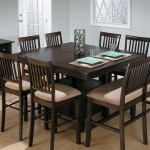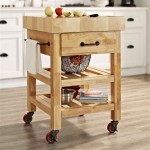Mobile Home Kitchen Sink Faucets: A Comprehensive Guide
Selecting the right kitchen sink faucet for a mobile home requires careful consideration of several factors distinct from those involved in choosing faucets for standard residential kitchens. Mobile homes often have unique plumbing configurations and spatial limitations, demanding faucets designed for compatibility and functionality within these specific constraints. This article provides a comprehensive guide to understanding the key aspects of mobile home kitchen sink faucets, covering types, installation considerations, and essential features.
Mobile homes, also known as manufactured homes, adhere to construction standards regulated by the Department of Housing and Urban Development (HUD). These regulations impact various aspects of the home, including plumbing systems. Understanding these specific requirements ensures compliance and avoids potential issues during inspections or renovations. Therefore, choosing a faucet specifically designed or approved for mobile home use is crucial for maintaining plumbing integrity and adhering to regulatory guidelines.
Furthermore, the physical dimensions of mobile home kitchens are generally smaller than conventional kitchens. Limited counter space and sink size restrictions necessitate careful consideration of faucet dimensions and reach. A bulky or oversized faucet can overwhelm the workspace and hinder functionality, while a faucet with insufficient reach may not adequately service the entire sink basin.
Understanding the Types of Mobile Home Kitchen Sink Faucets
The market offers a variety of kitchen sink faucets suitable for mobile homes, each with its own set of advantages and disadvantages. Understanding the different types available allows for informed decision-making based on individual needs and preferences. Common faucet types include:
Center-set Faucets: These faucets are designed for sinks with three holes drilled close together, typically 4 inches apart. They usually feature a combined spout and handles mounted on a single base. Center-set faucets are a common choice for smaller sinks found in many mobile homes due to their compact design.
Single-Handle Faucets: These faucets offer ease of use with a single lever controlling both water flow and temperature. They are available in various styles and can be mounted on sinks with one, two, or three holes using an optional escutcheon plate to cover any unused holes. Single-handle faucets are often preferred for their efficiency and modern aesthetic.
Pull-Down or Pull-Out Faucets: These faucets feature a spray head that can be pulled down into the sink or pulled out for extended reach. They are particularly useful for rinsing dishes, cleaning the sink, and filling large pots. While pull-down faucets require more vertical space, pull-out faucets may be more suitable for mobile homes with limited overhead clearance.
Wall-Mount Faucets: These faucets are mounted directly onto the wall above the sink, eliminating the need for holes in the sink deck. Wall-mount faucets can provide a clean and minimalist look, freeing up valuable counter space. However, installation requires access to plumbing within the wall, which may be more complex in mobile homes.
Two-Handle Faucets: These faucets feature separate hot and cold water handles, allowing for precise temperature control. They are available in various styles, including widespread and bridge faucets. While offering a classic look, two-handle faucets may require more sink holes and counter space compared to single-handle options.
When selecting a faucet type, consider the existing sink configuration, available counter space, and personal preferences for style and functionality. Evaluate the ease of use, water flow rate, and overall design to ensure the chosen faucet meets the specific needs of a mobile home kitchen.
Key Considerations for Installation in Mobile Homes
Installing a kitchen sink faucet in a mobile home presents unique challenges compared to standard residential installations. Mobile home plumbing systems often differ in terms of pipe materials, access points, and overall layout. Proper planning and preparation are essential to ensure a successful and leak-free installation.
Plumbing Connections: Mobile homes typically use PEX (cross-linked polyethylene) tubing for water lines, which requires specific fittings and tools for connection. Ensure that the faucet chosen is compatible with PEX plumbing or that appropriate adapters are available. Familiarize yourself with the type of plumbing connections in your mobile home before starting the installation.
Water Pressure: Mobile homes can sometimes experience lower water pressure compared to conventional homes. Choose a faucet designed to operate effectively at lower water pressures, typically indicated by a minimum pressure rating in the product specifications. Consider a faucet with a flow rate that is adequate for the water pressure available.
Accessibility: Access to plumbing connections under the sink can be limited in mobile homes due to confined spaces and cluttered storage areas. Before starting the installation, clear out the area under the sink and ensure adequate lighting. Consider using specialized tools designed for tight spaces, such as basin wrenches and flexible supply lines.
Drainage: Mobile home sinks often have smaller drain openings than standard sinks. Ensure that the faucet drain assembly is compatible with the existing drain size or that an adapter is available. Inspect the existing drainpipe for any signs of damage or corrosion and replace it if necessary.
DIY vs. Professional Installation: While some homeowners may be comfortable installing a kitchen sink faucet themselves, others may prefer to hire a qualified plumber. If you are unfamiliar with plumbing procedures or unsure about any aspect of the installation, it is always best to consult a professional. A professional plumber can ensure proper installation, prevent leaks, and address any unexpected issues that may arise.
Prior to commencing any plumbing work, confirm that the water supply has been shut off to prevent flooding. After installation, thoroughly inspect all connections for leaks and tighten as needed. It is advisable to test the faucet for several days after installation to ensure that no leaks develop over time.
Essential Features to Look For in Mobile Home Kitchen Sink Faucets
Beyond the type of faucet and installation considerations, several key features contribute to the overall functionality and longevity of a mobile home kitchen sink faucet. Prioritizing these features ensures that the chosen faucet provides years of reliable service.
Durability: Opt for faucets constructed from high-quality materials such as solid brass or stainless steel. These materials are more resistant to corrosion and wear, ensuring a longer lifespan. Avoid faucets made from plastic or other inferior materials, as they are more prone to cracking and leaking.
Finish: Choose a faucet finish that complements the kitchen décor and is easy to clean. Popular finishes include chrome, brushed nickel, and oil-rubbed bronze. Consider a finish that is resistant to water spots and fingerprints, such as a spot-resistant stainless steel finish.
Water Efficiency: Look for faucets with a low-flow aerator that reduces water consumption without compromising water pressure. Faucets with the WaterSense label meet EPA standards for water efficiency. A low-flow faucet can save water and lower utility bills over time.
Spray Functionality: If opting for a pull-down or pull-out faucet, evaluate the spray functionality. Consider a faucet with multiple spray settings, such as a stream, spray, and pause function. Ensure that the spray head is easy to grip and control, even with wet hands.
Warranty: Check the manufacturer's warranty before purchasing a faucet. A longer warranty indicates that the manufacturer has confidence in the product's quality and durability. Be sure to understand the terms and conditions of the warranty, including what is covered and for how long.
ADA Compliance: If accessibility is a concern, choose a faucet that meets the standards of the Americans with Disabilities Act (ADA). ADA-compliant faucets are designed to be easy to operate for people with disabilities, featuring lever handles and accessible reach.
Before making a final decision, read online reviews and compare prices from different retailers. Consider the overall value of the faucet, including its durability, functionality, and warranty. Choosing a faucet with the right features ensures a comfortable and efficient kitchen experience in a mobile home.

Kitchen Faucet With Sprayer For Mobile Home Manufactured Housing

Brushed Nickel Rv Mobile Home Pullout Faucet With Single Lever Sprayhead Stream Or Spray Option 3 1 Hole Sink

Brushed Nickel Rv Mobile Home Metal Kitchen Faucet Sink With Single Lever Pull Down Sprayer 3 Or 1 Hole

Brushed Nickel Rv Mobile Home Kitchen Faucet With Gooseneck Spout

Brushed Nickel Rv Mobile Home Kitchen Faucet With 25mm Gooseneck Spout Solid Sabre Handles

Moen Adler 1 Or 3 Hole Modern Spot Resist Stainless Single Handle Pull Down Kitchen Faucet With Sprayer Deck Plate Included In The Faucets Department At Lowes Com

For Use With Mobile Homes Kitchen Faucets At Lowes Com

Oil Rubbed Broe Rv Mobile Home Kitchen Faucet With Gooseneck Spout

Chrome Rv Mobile Home 2 Handle Metal Faucet With Gooseneck Spout Sprayer

Ultra Faucets Rv Mobile Home Trailer Kitchen Sink Faucet Stainless Steel Greydock Com








